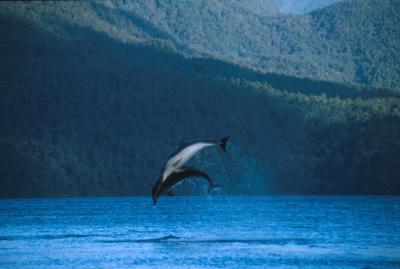Mating strategies are straightforward in bottlenose dolphins, or are they? Much of the work carried on male-female relationships in that species to date show that males tend to coerce females who are left with little choice about with whom to mate. This explains the complex relationships we observe in male bottlenose dolphins, which are only paralleled by human social strategies: the formation of alliances and alliances of alliances, also called coalitions. These alliances and coalitions are then used to out-compete other male bands to access females. Credit: David Lusseau, 2001
Credit: David Lusseau, 2001
A population of bottlenose dolphins in Fiordland, New Zealand, may be rewriting the textbooks. In this population males form alliances and coalitions and have complex social relationships, but they do not coerce females into mating.
David Lusseau, in a study published this week in PLoS ONE, posits that the complexity of male social relationships in this population emerge to compete for female choice. Male coalition formation is observed during fights in this population. Usually coalition formation will be driven by short-term gains for the helper (for example access to females). But there do not appear to be any short-term benefits in coalition and alliance formation in this population. Instead one male band seems to spend much more time with sexually receptive females and females with new calves than others.
Lusseau says: "In a mating system driven by female selection being able to exclude other males from the vicinity of oestrus females means that individuals can be more readily picked as a favourite partner".
The old saying seems to hold true for these dolphins: "far from the eyes, far from the heart".
Citation: Lusseau D (2007) Why Are Male Social Relationships Complex in the Doubtful Sound Bottlenose Dolphin Population?. PLoS ONE 2(4): e348. doi:10.1371/journal.pone.0000348